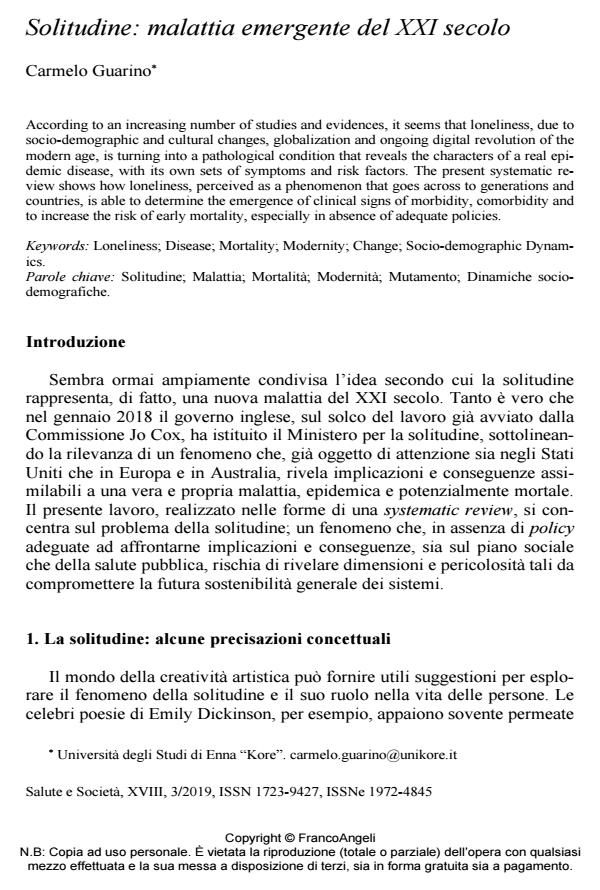Solitudine: malattia emergente del XXI secolo
Journal title SALUTE E SOCIETÀ
Author/s Carmelo Guarino
Publishing Year 2019 Issue 2019/3
Language Italian Pages 15 P. 146-160 File size 177 KB
DOI 10.3280/SES2019-003013
DOI is like a bar code for intellectual property: to have more infomation
click here
Below, you can see the article first page
If you want to buy this article in PDF format, you can do it, following the instructions to buy download credits

FrancoAngeli is member of Publishers International Linking Association, Inc (PILA), a not-for-profit association which run the CrossRef service enabling links to and from online scholarly content.
According to an increasing number of studies and evidences, it seems that loneliness, due to socio-demographic and cultural changes, globalization and ongoing digital revolution of the modern age, is turning into a pathological condition that reveals the characters of a real epi-demic disease, with its own sets of symptoms and risk factors. The present systematic review shows how loneliness, perceived as a phenomenon that goes across to generations and coun-tries, is able to determine the emergence of clinical signs of morbidity, comorbidity and to in-crease the risk of early mortality, especially in absence of adequate policies.
Keywords: Loneliness; Disease; Mortality; Modernity; Change; Socio-demographic Dynamics.
Carmelo Guarino, Solitudine: malattia emergente del XXI secolo in "SALUTE E SOCIETÀ" 3/2019, pp 146-160, DOI: 10.3280/SES2019-003013